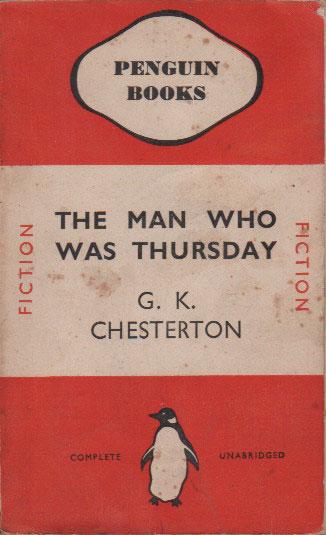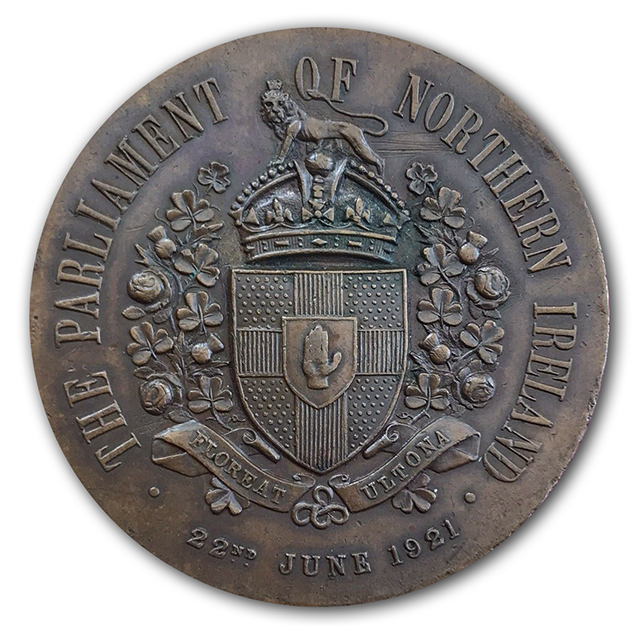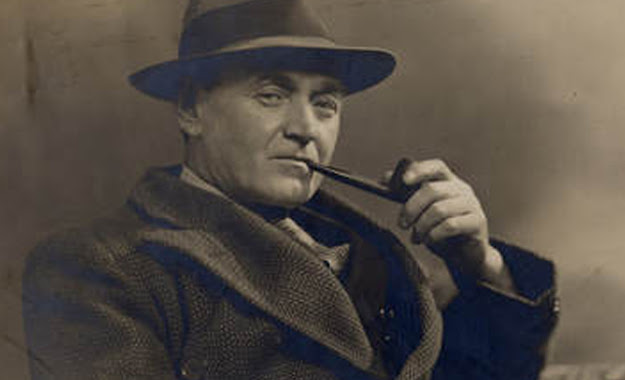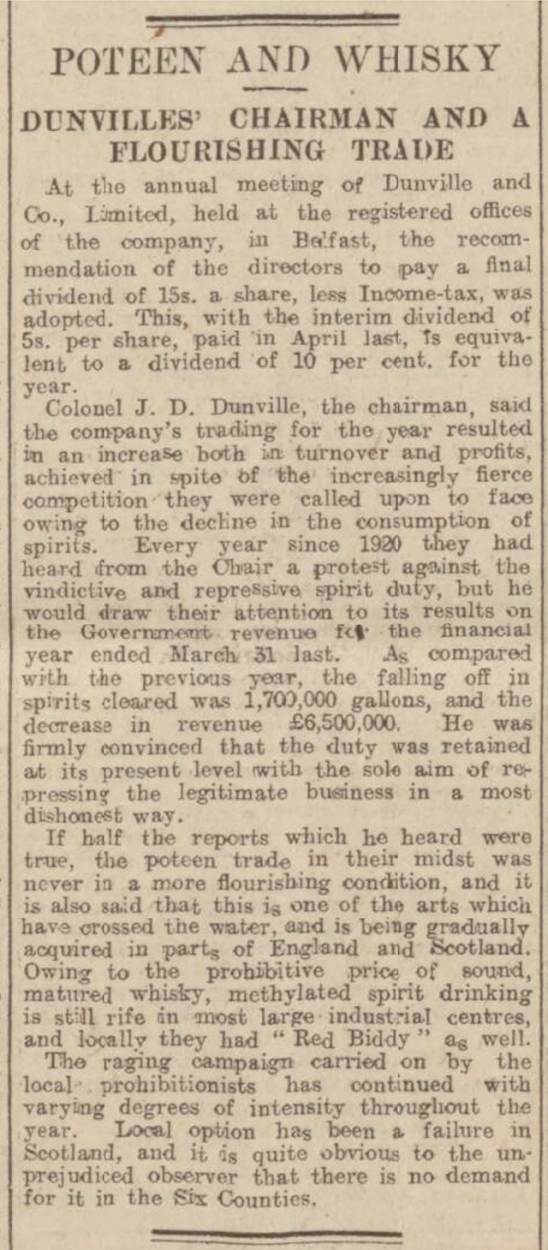I found this photo again recently, from 2004, a lovely and once-famous old local farmstead. It's gone now but it was one of the many that inspired me when gathering ideas for what we would eventually buildWith modern regulations to comply with and a different shape of site, ours turned out a bit differently. We tried to keep the 'longhouse' notion as best we could, and of course the classic red doors.
Wednesday, September 30, 2020
Islandmagee Ulster-Scots 'gunrunning' aftermath postcard, 1914
I am reading a lot just now about Islandmagee and I found this again this evening. Multiple complexities here in the aftermath of the Larne gun-running of 1914. Scanned from a book of vintage Ulster postcards, published by Linen Hall Library.
Tuesday, September 29, 2020
Informers and agents everywhere – G.K. Chesterton's 'The Man who was Thursday'
"A poor man has much more interest in good government than a rich man. A poor man must stay and be misgoverned; a rich man has a yacht". – G.K. Chesterton
Chesterton (1874–1936) was a renowned writer, still held in high regard today. He was firstly a 'high church' Anglican and later a Catholic theologian. The photo above is of his grave at Beaconsfield in Buckinghamshire, very close to where my in-laws live, and I had hoped to visit it this past summer but coronavirus banjaxed those plans. He is very quotable and has multiple fans on Twitter, tweeting little chunks of Chesterton every day.
Last summer I read his gripping 1908 novel The Man Who Was Thursday (Wikipedia here). It's set in London, and is about a man who is approached by the police to infiltrate an anarchist group who are plotting a terror campaign. He very quickly rises through the ranks to take a seat at the top table of the organisation, where an odd collection of individuals all have codenames which are the days of the week. He becomes 'Thursday'.
As the novel develops it turns out that every single one of these anarchists is also a police agent or informer. It's never been out of print and has been dramatised by BBC Radio Four (iPlayer link here), and also a movie as recently as 2016.
In recent weeks in Northern Ireland we numerous revelations of informers within armed groups of all political shades, from away back at the very start of our Troubles right up to the present day. A sizeable segment in the Radio Ulster current affairs discussion programme Talkback just today was about this story. There have of course been decades of stories like these seeping out. All of which begs the question – if each of those groups was so riddled with agents, then who was pulling the strings, for what reasons, and why was it allowed to drag on for so many bloodied years?
Some have claimed that our conflict was a social experiment and that Northern Ireland was a kind of laboratory where new strategies could be tested.
Whatever the truth is, I doubt we will ever really find out. As a noted journalist wrote back in January in an article on the subject – "The central truth about Northern Ireland, which stands as the primary enabler that makes the utterly impossible often perfectly probable, is that it is a society based on lies. Everyone lies there. Everyone. They lie to themselves, they lie to one another, they lie to their children, they lie to their friends, they lie to their enemies. Lies are the currency of almost all intellectual exchanges..."
Monday, September 28, 2020
The Ulster Covenant and Charlotte, North Carolina – 12 September 1912
"When the Scotch-Irish have a case of conscience they have it bad" – The Charlotte Observer of North Carolina reporting on the Ulster Covenant, September 1912 – connecting it back to Scotland's National Covenant of 1638 and their own Mecklenburg Declaration of 1775.
Tyler Childers 'Long Violent History'
This is a very interesting contextual video to Tyler Childers' new fiddle album
Wednesday, September 23, 2020
'A crack' with Paddy O'Neill – James Craig, their wives, and the importance of relationships
If coronavirus wasn't dominating the phone-in shows, the forthcoming centenary / centenNIal of Northern Ireland would be. It manages to squeeze in between the gaps every once in a while. This recent article by Professor John Wilson Foster is excellent. Today, in looking for something else, my eye caught this extract from St John Ervine's Craigavon, Ulsterman, his biography of James Craig the first Prime Minister of Northern Ireland.
Craig and Patrick O'Neill were political opponents, but they were also personal friends. O'Neill was a hotelier in Warrenpoint, and evidently their wives shared a mutual regard too. You can see in the page image below, Craig "liked the man and did not let their differences divide them".
This is an important reminder that relationship can transcend political difference. I hope that in all of the political history we'll get next year, much of which will be divisive and will be deployed by spokespersons to justify century-long events and present-day positions, that there will be also be room to acknowledge that stories like this happened too.
There has not only ever been conflict. Those who insist there was usually benefit in some way from persuading others of that claim.
Tuesday, September 22, 2020
Thursday, September 17, 2020
A Dublin view of Ulster-Scots, 1914
Rev. Augustine Dillon Cosgrave (1865–1936) was Dublin born and bred, and a member of the Carmelite order. He was a noted historian and his 1906 volume A History of Ireland in the Nineteenth Century (online here) has lots of very interesting material. It's good to read deeply within your own community, but also to read widely beyond it. His perspectives on key events of that century are quite different to the ones I have absorbed.
The 1914 article below, which is on JSTOR here, looks brilliant, showing his understanding that 'Ulsterisms' are overwhelmingly 'really Scotticisms ... a Scotsman may easily be taken for an Ulsterman, or vice versa, if his place of origin be judged by his speech alone ... to a Dubliner, all Ulstermen, whether judged by speech or character, are like Scotchmen'.
His observation that there is a 'homogeneity of speech which seems to be shared by Ulstermen of all creeds and politics' I think is still largely true a century later, but with regional variations within.
The Catholic Standard of 1 May 1936 paid tribute to Cosgrave as 'not only one of Dublin's most familiar and best-loved figures, but also one of the foremost authorities on its history and antiquities' and went on to say that he 'specialised in modern languages, in which he was highly accomplished'. So his linguistic observations on the Scots influence on Ulster's speech is significant.
He died aged 72, as a result of an accident, and was buried at Glasnevin Cemetery.
Saturday, September 12, 2020
Thomas Carnduff - "our utter lack of interest in history ... the fault lies with the Government"
"A great failing many Ulster people have is our utter lack of interest in the history and legends attached to almost every strip of land in the North. The fault, perhaps, doesn't lie with the people but with the Government. They have yet to produce a school book giving the reader an outline of Ulster history. A country without history is somewhat like a man without a name; he is born, lives, dies, and is forgotten."
– Thomas Carnduff, from an article entitled "I Think This Stage-Ulsterman Stuff Is About Played Out" in the Belfast Telegraph, 18 November 1942.
From just a few searches in the online British Newspaper Archive I am finding a quite different Carnduff than the standard biographies portray. I have only posted a few here, inspired by his article in The Bell in July 1942 – which it turns out was based on a Belfast Telegraph article from four years earlier on 9 July 1938, which was entitled 'The Literature of Orangeism is No Sham'.
Every editor has either conscious or unconscious bias. With his Blue Plaque on Belfast's famous Linen Hall Library, I think Carnduff has been edited selectively, reduced to a smaller thinker than he was, and a rethink is overdue, by someone capable of doing so. But when you send someone panning for gold, make sure they know what gold looks like.
But his point is key - Northern Ireland was 21 years old, into its second generation, and the Government still had not published a history.
Thomas Carnduff - 'Wake Up Ulster' - Belfast Telegraph , 6 August 1927
Here Carnduff shows that he must have been drinking from the same fountain as Rev. W.F. Marshall, ticking all the classic boxes - a rallying cry in the early years of Northern Ireland's existence.
Thursday, September 10, 2020
Thomas Carnduff, 'Belfast' in 1942, and giving yourself room to critique
The photo below is of the home turf of Thomas Carnduff (1886–1956), Belfast's Sandy Row, as famously photographed by Bill Kirk in 1974 (see article on Culture Northern Ireland here). Two years after I was born this is how people there lived. Staunchly unionist, yet utterly neglected by what some would claim was 'their' state.
[An important recent Radio Ulster interview, with a 92 year old lady called Ruby and her son Paul, of the Fountain Estate working class unionist community's experiences in Londonderry in 1968 is similarly shocking and stereotype-shattering – link here]
The handful of editions of The Bell that I acquired recently are full of content that is intriguing and stimulating. I have never got around to reading any Thomas Carnduff (1886–1956) until now, but this piece I have posted below is a rich vein of thought. It's 32 years before the photograph above. I'm not on-side with all of Carnduff's perspectives, but he has the guts to praise and stoutly defend aspects of life in Belfast, and also the wisdom to leave space to critique aspects of it too. Kirk's photographs show reason enough why.
One of the difficulties around the forthcoming centenary/centennial of Northern Ireland and the Irish Free State is that the Ulster-Scots were, and are, on both sides of the line, and have never been unthinking supporters of any state wherever in the world they have travelled. As Carnduff hints here "one long chapter of municipal independence and disagreements with the lawful demands of the King's representatives" – centuries of experiences which have been mined in Scotland and forged in Ulster.
The marking of 2021 poses challenges which need to be thought through, within Northern Ireland and also for our neighbours within today's Republic of Ireland. Having spent some time over the years with the self-described "minority community" on the other side of our presently-soft border, their experiences need to be acknowledged. Those experiences tend to be swiftly glossed over by the establishment-endorsed narratives, but many of those folk will still speak today of "keeping our heads down". I am just an interested spectator and a visitor though, I have no family there. Those who do are key in finding the right and respectful approach.
These are not the only perspectives that can be viewed for the centenary/centennial. And there aren't just "two sides" to be told – there are thousands, millions even, of stories.
Carnduff is interesting here. I need to read more of his.
Monday, September 07, 2020
"The Realm of Strathclyde"
More information here. "Strathclyde is a serious micronation in western Europe. She has her own elected King, written constitution, elected government, elected parliament, and is recognised by at least 16 other micronations around the world. She has her own laws and is heavily influenced by and committed to human rights, and to John Stuart Mill's idea of liberty, which is protected through our constitution".
It is very possible that one of my friends is pranking me.
Sunday, September 06, 2020
"Ninian and Nendrum – Whithorn and the Early Church in east Ulster"
I picked up a booklet recently of this title, being the content of the Tenth Whithorn Lecture given on 15 September 2001 by the late Dr Ann Hamlin O.B.E. (1940–2003), edited by Malcolm Fry, and published by The Friends of Whithorn Trust. Dr Hamlin worked for the Archaeological Survey of Northern Ireland, which was then part of the Department of the Environment.
Nendrum is one of Ireland's most important early monastic sites - it was 'lost' for centuries except for ancient manuscript records. It was finally located by the meticulous antiquarian and historian Bishop William Reeves in 1844, and then was literally uncovered by a team of local archaeologists, farmers and contractors almost 100 years ago, in June 1922. You can read a report of the "repair and preservation" of Nendrum online here, including an interesting list of all of those who donated funds to the project.
The early Christian communities' connections across the North Channel and Irish Sea were many, thanks to the ancient kingdoms, such as Dal Fiatach, which also had connections on each side. (The sites of Whithorn and Nendrum are marked on the map above).
St Ninian (Wikipedia here) was Scotland's first saint; he began his missionary work at Whithorn in AD397. He died in AD432 (according to some sources he died in Ireland) – which is traditionally given as the year that St Patrick began his work in Ireland. A passing of the baton if you will. Around a century later, St Finnian, who was of the 'royal' family of Dal Fiatach, is best known for his work at Movilla near Newtownards – he studied at both Nendrum and Whithorn. St Columba was one of Finnian's pupils, who of course founded the world famous monastery on the western Scottish island of Iona.
Wednesday, September 02, 2020
The 1927 Stormont Debate – Tommy Henderson, Liquor and Ice Cream
Nationalist MP for Fermanagh and Tyrone, Thomas Harbison is reported as saying that –
"... he did not believe that temperance legislation would ever make people temperate. The only way to make people temperate was to teach the children at their mother's knees and afterwards in their respective churches. They could never work a moral revolution by legislation. The only way to make men temperate was by giving them liberty, for if they curtailed men's liberties there was something in human nature that caused them to rebel against coercion ..."
Independent Unionist Colonel Philip James Woods said that "... visitors to hotels should have the same liberties in Ulster as they had in England". He was also concerned at the threat to "... personal liberty that police should have the right to go in and inspect clubs. The man in the street had not been considered, only the trade and the temperance party were consulted."
But the most revealing response was from the man pictured above, the renowned Independent Unionist Tommy Henderson – check this out from the Belfast News-Letter:
The Belfast Telegraph report that same day expanded on Henderson's point about class – "the Government supporters could always get as much drink as they wanted ... the eating of ice-cream was more dangerous than a drop of decent liquor".
Henderson was at least partly correct. The restrictions on 'decent liquor' by official alcohol licensing laws had led to a sharp increase in the illicit production of sub-standard illegal stuff – not the romance of poteen, but the home-made horror of a drink nicknamed Red Biddy which was a mix of cheap wine and methylated spirits. A year earlier, Nationalist MP "Wee"Joe Devlin (who also had a background in the drink trade) had warned of the social problems that the invention of Red Biddy was causing, and said in a Stormont debate "in the name of temperance you are poisoning the public of Ulster, and soon you will have no constituents left" (Lurgan Mail, 13 November 1926).
Below is a report from the Western Morning News from 24 October 1927, less than two weeks before the debate, given by the chairman of Dunville's on seriousness of the issue. Whisky sales were declining so of course he had a commercial interest at stake. (It is interesting that he said that poteen production had been exported from Ireland into Scotland and England.)






























